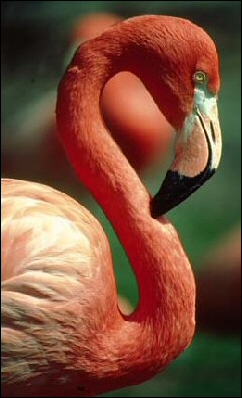Turks and Caicos Islands

Birding the Turks & Caicos
Beautiful by Nature is the National slogan of the Turks and Caicos Islands which is rumored were discovered by Christopher Columbus in 1492 and now some 500 years later is being rediscovered as one of the fastest growing travel destinations in the Caribbean. The British Oversea Territory is famous for her secluded beaches, crystal clear turquoise blue waters, unspoilt reefs and dramatic walls this archipelago has some of the best diving and snorkeling in the world.
These days however, beside their bronzing creams, visitors should pack a good pair of binoculars! The Turks and Caicos has tweaked the interest of serious birders especially since 1992 when the government set aside 33 protected areas of National Parks, Nature Reserves and Sanctuaries. Now over 190 bird species can be found at varying times of the year throughout the islands mainly due to the fact that the Bahamas chain is an important route for migratory birds between North and South America. Of these 190 species there are 52 known to breed locally. In 1990 the Southern coasts of North, Middle and East Caicos were designated a RAMSAR site to ensure the protection of endangered wetlands. Here in the lagoons, salt ponds and mangrove swamps can be found over 60 waterfowl species including the rare West Indian Whistling duck and the Greater Flamingo featured on many stamps as it is the National emblem of the Turks and Caicos.
The Turks and Caicos Islands are one of the last remaining British Colonies and located some 575 miles southeast of Miami Florida with the Bahamas about 30 miles to the Northwest and the Dominican Republic some 100 miles to the Southeast. The country consists of two groups of islands, the Turks Islands and the Caicos Islands which are separated by a 22-mile passage called the Columbus Passage. To the west are the Caicos group: West Caicos , Providenciales, North Caicos, East Caicos and South Caicos. To the east are the Turks group: Grand Turk and Salt Cay.
-
Number of bird species: 229
(As at October 2018)More than half (122 are very rare or accidental)
-
iGoTerra Checklist
iGoTerra ChecklistFatbirder Associate iGoTerra offers the most comprehensive and up to date birds lists on the web
-
A Birder's Guide to the Bahama Islands (Including Turks and Caicos)
| By Anthony W White | ABA | 1998 | Spiralbound | 302 pages, Col and b/w photos, illus, maps | ISBN: 9781878788160 Buy this book from NHBS.com -
Birds of the Bahamas and the Turks & Caicos Islands
| By Bruce Hallett | Macmillan Caribbean | 2006 | Paperback | 245 pages, colour photos, b/w illustrations, 1 colour & 1 b/w map | ISBN: 9780333937440 Buy this book from NHBS.com -
Birds of the West Indies
| By Guy M Kirwan, Anthony Levesque, Mark W Oberle & Christopher J Sharpe | Lynx Edicions | 2019 | 400 pages, 1600+ colour illustrations, 650+ colour distribution maps | ISBN: 9788416728176 Buy this book from NHBS.com -
The Birds of the Turks & Caicos Islands
| By Richard Ground | Turks and Caicos National Trust | 2001 | Hardback | 94 pages, colour photos | ISBN: 9789769507906 Buy this book from NHBS.com
-
Turks & Caicos National Trust
Facebook PageTurks & Caicos National Trust - P.O. Box 540 ~ Providenciales ~ Turks & Caicos Islands ~ BWI Phone:649 941 5710 ~ Fax:649 941 4258 ~ Email: tc.nattrust@tciway.tc Mission statement: To establish itself as a self-sustaining organization through the preservation, development and promotion of the heritage of the Turks and Caicos Islands; to create awareness by and opportunities for the people through education and participation; and to ensure that present and future generations take pride in and enjoy the benefits of their heritage. Also see Facebook Page
-
NP North West Point Marine
InformationSatellite ViewLocated on the northwestern part of the island of Providenciales, 5.2 miles northwest of Blue HillsNorthwest Point Marine National Park includes nearby reefs and several saline lakes that attract breeding and migrant birds -
NR Pigeon Pond and Frenchman’s Creek
InformationSatellite ViewThe Pigeon Pond and Frenchman’s Creek Nature Reserve is a time capsule of TCI’s natural history, and features hundreds of acres of pristine tropical woodlands represented by hardwoods, orchids, perching birds and reptiles some of which are found nowhere else on earth.
-
2011 [03 March] - Peter Osborn
PDF Report...The surrounding area, with its numerous undeveloped plots towardsRichmond Hills, held a variety of warblers including migrant Northern Parula and resident YellowWarbler, species that would become well-known over coming days such as Thick-billed Vireo(heard singing all over the islands), Bahama Woodstar, Common Ground Dove and NorthernMockingbird, plus a good sighting of a Mangrove Cuckoo. One of the memorable points of the visitwas the number of birds that gave stunning views...
-
Crabtree Apartments - Grand Turk
AccommodationCrabtree Apartments are 3 quaint Bungalow like, 2 bedroom, 1 bath, vacation rental units directly on the beach. Each unit has 2 air-conditioned bedrooms one with an oceanview and queen bed and one with 2 twins that can be converted into a king with a view of the salinas and the wildlife they attract. -
Dragon Cay Resort (Formerly Blue Horizon Resort)
AccommodationDragon Cay Resort (Formerly Blue Horizon Resort) is a unique tropical destination tucked behind 2,200 feet of naturally preserved beachfront on Middle Caicos, the largest but least developed of the eight inhabited islands in The Turks & Caicos Islands. When you stay at one of the private Cottages or Villas at Dragon Cay Resort, you will be immersed in a privacy and tranquillity not common in today’s Caribbean Resort Landscapes...
-
Caribbean Birding Trail - Turks & Caicos
Information...Further shallow banks (Mouchoir, Silver and Navidad) to the south-east, some within TCI territory, are important for whales and probably for feeding seabirds. The Bahamas lie on separate banks to the northwest, and share some aspects of the geography...

